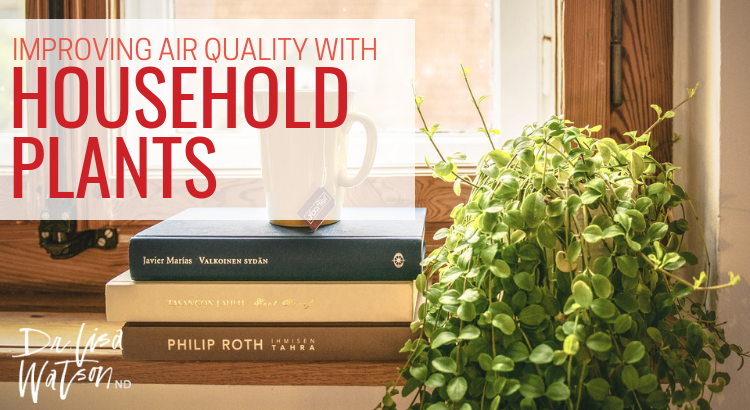
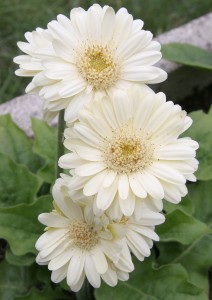
Living indoor plants add a natural beauty to our homes and workplaces and offer a welcome glimpse of green in the depths of a Canadian winter, but did you know they can also purify the air we breathe and contribute to a healthy home and office?
NASA’s Plant Program
In the late 1980s NASA researchers began looking at houseplants as a potential means of cleansing the atmosphere in future space stations.They discovered that many common houseplants help diminish indoor air pollution by removing harmful gases from the air, through the simple processes of photosynthesis.Other pollutants are absorbed by the plants and rendered harmless in the soil.
Plants are known to absorb carbon dioxide and release oxygen but the NASA researchers found that many houseplants are also able to absorb benzene, formaldehyde and tricholoroethylene.
Indoor Air Pollutants and Sick Building Syndrome
These three chemicals (benzene, formaldehyde and trichloroethylene) are among the most common airborne pollutants in new homes and offices.Newer buildings are constructed largely with synthetic materials containing these and other harmful materials which are known to “off-gas” pollutants into the indoor air.This “off-gassing” combined with heavily insulated buildings and reduced fresh air exchange resulted in an increased incidence of “sick building syndrome” (SBS), a medical syndrome associated with indoor air pollution and diminished air circulation.
Symptoms of SBS range from specific symptoms such as itchy eyes, skin rashes, and nasal allergy symptoms, to more vague symptoms such as fatigue, aches and pains, and sensitivity to odours.See Table 1 for symptoms associated with the different indoor air pollutants.
Table 1: Indoor Air Pollutants – Sources and Symptoms of Exposure
Air Pollutant |
Source |
Symptoms |
|
Formaldehyde |
Insulation |
Eye irritation |
|
Benzene |
Inks |
Skin irritation |
|
Trichloroethylene |
Dry cleaning
|
Liver carcinogen |
Shade Loving Plants – The Best Air Purifiers
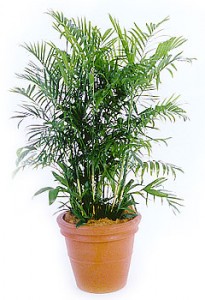
The plants NASA determined to be most effective in purifying indoor air are plants that evolved in tropical or sub-tropical forests, where they received light filtered through the branches of taller trees.
Because of the low-light conditions in their natural environment these plants became very efficient photosynthesizers.They are able to absorb and neutralize gases in the air easily with only indirect sunlight.This feature also makes them excellent indoor plants because they don’t require direct sunlight to thrive and grow.
Allowing air to contact the soil increases the amount of air pollution that will be processed by the houseplants.Micro-organisms in the soil use trace amounts of airborne chemicals as a food source.Their effectiveness is increased if lower leaves that cover the soil surface are removed, allowing more air to contact the soil surface.
Choosing an Indoor Houseplant
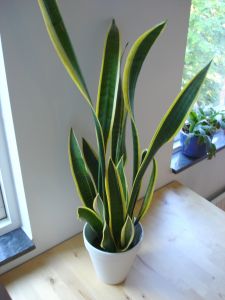
The NASA studies recommend that you use 1 good-sized houseplant in a 6 to 8-inch diameter container for each 100 square feet of indoor space.A more heavily polluted environment would require a greater number of plants.And the better they grow, the better job they will do purifying the air for you!
The plants found to be most effective at cleansing indoor air pollution by NASA scientists are:
- Hedera helix – English ivy
- Chlorophytum comosum – Spider plant
- Epipiremnum aureum – Golden pothos
- Spathiphyllum ‘Mauna Loa’ – Peace lily
- Aglaonema modestum – Chinese evergreen
- Chamaedorea sefritzii – Bamboo or reed palm
- Sansevieria trifasciata – Snake plant or Mother-in-law’s tongue
- Philodendron scandens ‘oxycardium’ – Heartleaf philodendron
- Philodendron selloum – Selloum philodendron
- Philodendron domesticum – Elephant ear philodendron
- Dracaena marginata – Red-edged dracaena
- Dracaena fragrans ‘Massangeana’ – Cornstalk dracaena or Mass cane
- Dracaena deremensis ‘Janet Craig’ – Janet Craig dracaena
- Dracaena deremensis ‘Warneckii’ – Warneck dracaena
- Ficus benjamina – Weeping fig or Ficus
- Gerbera jamesonii – Gerbera daisy
- Chrysanthemum morifolium – Pot chrysanthemum
Resources:
Information taken from the NASA report Interior Landscape Plants for Indoor Air Pollution Abatement, September 1989.Dr. B.C. Wolverton, Anne Johnson, and Keith Bounds, National Aeronautics and Space Administration, John C. Stennis Space Center, Science and Technology Laboratory, Stennis Space Center,MS 39529-6000.
Living indoor plants add a natural beauty to our homes and workplaces and offer a welcome glimpse of green in the depths of a Canadian winter, but did you know they can also purify the air we breathe and contribute to a healthy home and office?
NASA’s Plant Program
In the late 1980s NASA researchers began looking at houseplants as a potential means of cleansing the atmosphere in future space stations. They discovered that many common houseplants help diminish indoor air pollution by removing harmful gases from the air, through the simple processes of photosynthesis. Other pollutants are absorbed by the plants and rendered harmless in the soil.
Plants are known to absorb carbon dioxide and release oxygen but the NASA researchers found that many houseplants are also able to absorb benzene, formaldehyde and tricholoroethylene.
Indoor Air Pollutants and Sick Building Syndrome
These three chemicals (benzene, formaldehyde and trichloroethylene) are among the most common airborne pollutants in new homes and offices. Newer buildings are constructed largely with synthetic materials containing these and other harmful materials which are known to “off-gas” pollutants into the indoor air. This “off-gassing” combined with heavily insulated buildings and reduced fresh air exchange resulted in an increased incidence of “sick building syndrome” (SBS), a medical syndrome associated with indoor air pollution and diminished air circulation.
Symptoms of SBS range from specific symptoms such as itchy eyes, skin rashes, and nasal allergy symptoms, to more vague symptoms such as fatigue, aches and pains, and sensitivity to odours. See Chart 1 for symptoms associated with the different indoor air pollutants.
Chart 1: Indoor Air Pollutants – Sources and Symptoms of Exposure
If you live or work in an older building sick-building syndrome is not likely to affect you. But if you live in a newer, energy-efficient home or work in a building with poor air circulation, the use of houseplants may help to alleviate some of the air quality issues in your indoor environment.
Shade Loving Plants – The Best Air Purifiers
The plants NASA determined to be most effective in purifying indoor air are plants that evolved in tropical or sub-tropical forests, where they received light filtered through the branches of taller trees.
Because of the low-light conditions in their natural environment these plants became very efficient photosynthesizers. They are able to absorb and neutralize gases in the air easily with only indirect sunlight. This feature also makes them excellent indoor plants because they don’t require direct sunlight to thrive and grow.
Allowing air to contact the soil increases the amount of air pollution that will be processed by the houseplants. Micro-organisms in the soil use trace amounts of airborne chemicals as a food source. Their effectiveness is increased if lower leaves that cover the soil surface are removed, allowing more air to contact the soil surface.
Choosing an Indoor Houseplant
The NASA studies recommend that you use 1 good-sized houseplant in a 6 to 8-inch diameter container for each 100 square feet of indoor space. A more heavily polluted environment would require a greater number of plants. And the better they grow, the better job they will do purifying the air for you!
The plants found to be most effective at cleansing indoor air pollution by NASA scientists are:
- Hedera helix – English ivy
- Chlorophytum comosum – Spider plant
- Epipiremnum aureum – Golden pothos
- Spathiphyllum ‘Mauna Loa’ – Peace lily
- Aglaonema modestum – Chinese evergreen
- Chamaedorea sefritzii – Bamboo or reed palm
- Sansevieria trifasciata – Snake plant or Mother-in-law’s tongue
- Philodendron scandens ‘oxycardium’ – Heartleaf philodendron
- Philodendron selloum – Selloum philodendron
- Philodendron domesticum – Elephant ear philodendron
- Dracaena marginata – Red-edged dracaena
- Dracaena fragrans ‘Massangeana’ – Cornstalk dracaena or Mass cane
- Dracaena deremensis ‘Janet Craig’ – Janet Craig dracaena
- Dracaena deremensis ‘Warneckii’ – Warneck dracaena
- Ficus benjamina – Weeping fig or Ficus
- Gerbera jamesonii – Gerbera daisy
- Chrysanthemum morifolium – Pot chyrsanthemum
Resources:
Information taken from the NASA report Interior Landscape Plants for Indoor Air Pollution Abatement, September 1989. Dr. B.C. Wolverton, Anne Johnson, and Keith Bounds, National Aeronautics and Space Administration, John C. Stennis Space Center, Science and Technology Laboratory, Stennis Space Center, MS 39529-6000.













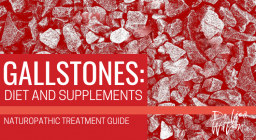



Keep posting stuff like this i really like it
[…] Air purifying houseplants are kept in the office to clean the air […]